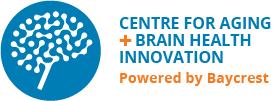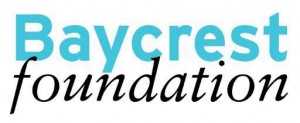There are some great ideas emerging out of seniors’ care innovation, but innovators often face challenges putting their ideas into practice. At CABHI, innovators have access to acceleration services, including knowledge mobilization (KM), to help develop, scale and sustain their solutions.
Stacey Guy, CABHI’s knowledge mobilization specialist, joined us for a Q&A about KM and why it’s crucial to successful innovations in healthcare.
Tell us about yourself.
I come out of the world of rehabilitation, where I worked with clinical staff to make improvements to patient care. I’m currently completing a PhD in health and rehabilitation science at Western University, focusing on clinical implementation.
At the heart of care is people: what they believe, what they value, what they choose and don’t choose to do. I’m interested in how, by enabling those who deliver care to adjust or adopt new behaviours, we can provide improved care.
When I’m not in the office, I’m catering to the whims of my Husky Shepherd mix, Frisco.
What is knowledge mobilization?
It’s a way to get tested products, programs, and services into the healthcare system to improve care. Knowledge mobilization tries to do this by embedding the people who will be using or delivering the innovation in the development and testing of the innovation. For example, if you’re developing an app for caregivers, it’s essential to have caregivers involved in the process. It’s also about getting the right information to the right people at the right time.
Why is knowledge mobilization important?
As an innovator, you need to make sure you’re developing a product, program, or service that addresses an actual need. No one wants their innovation to be ‘left on the shelf.’ Knowledge mobilization uses tools, methods, and processes to help increase the chance an innovation will be used by the intended people and in the way it is intended. It also increases the likelihood that the innovation will stick.
Secondly: if the results of your work are known only by your team or the people involved in the project, how can others use your work to improve their health? Integrating a knowledge mobilization strategy helps ensure that your work moves forward.
How can you help CABHI projects?
If you’re a project supported by CABHI, I can help:
- Develop a strategy for the implementation of your innovation, including identifying barriers and strengths
- Plan for sustainability
- Develop materials to share information about your innovation
- Link you to resources and tools including CABHI’s Seniors Advisory Panel, a consumer panel comprised of older adults with lived experience in aging and caregiving
Can you share some examples of how CABHI projects have used knowledge mobilization to their benefit?
One is the Glenrose Grocery Game, which was created by clinicians at Calgary’s Glenrose Rehabilitation Hospital. The game, designed for older adults, is used to address problems with cognitive skills and assist with the transition from hospital to home. The team used KM to identify other clinician stakeholders that could benefit from incorporating the game into their practice, towards the goal of scaling beyond their organization.
Another is the Baycrest-based ArtontheBrain, a digital recreation activity designed for all older adults including those with cognitive decline. The team is using KM to plan how they will disseminate the results of their validation study, including crafting messaging for specific audiences and identifying optimal avenues for communication.
How can projects get in touch with you?
I can be contacted directly at sguy@cabhi.com, or through their portfolio manager.
Learn more about CABHI’s knowledge mobilization services here.
Listen to CABHI’s Community of Innovation podcast episode about knowledge mobilization here.



